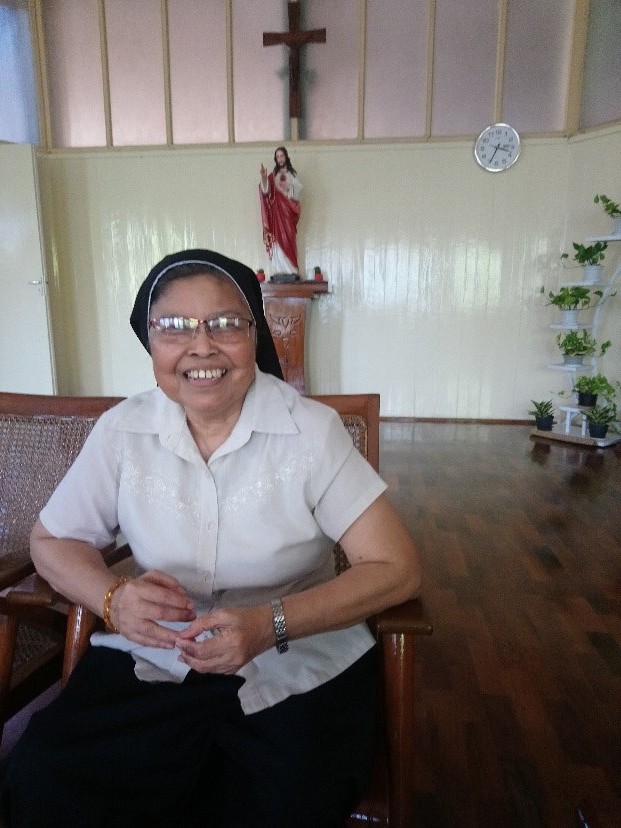
Sister Rose Mary was born in 1941 in Chantar Ywa, Mandalay Division. She is a Roman Catholic nun and holds Burmese citizenship. She belongs to the small Bayingyi ethnic group and is one of ten children. She left her home village to study Burmese literature in Mandalay. In 1961 she had her exam and was very afraid that she might not pass it. She took an oath: if she passed, she would become a nun. The fact that her older brother was a priest certainly helped. He later became Archbishop of Mandalay (now deceased). She passed the exam and entered the Good Shepherd Sisters convention in Yangon as a candidate. The convent is located in the building of the former German Club on Bogyoke Aung San Street. She made her final vow in 1974 and has been a nun ever since. Over the years the number of nuns has decreased to three (due to reasons of age). The convention used to be run by Irish nuns. They were interned during the Japanese occupation and had to leave the country in 1965. The Burmese sisters stayed. Religion has always played an important role in Sister Mary Rose’s large family. One of her nephews is a priest in the major seminary next to the convent. Her convent has a branch in Maymyo.
Her daily routine is as follows:
4.30 a.m. get up
05.15 First prayer
06.15 Mass
07.00 breakfast
12.00 lunch
6 p.m. Dinner
On Wednesday the nuns are allowed to watch TV.
The slowly disappearing term Bayingyi is derived from Feringhi (cf. Farang in Thai), the Arabic name for Christian Europeans (actually: Franks). For a long time it referred to Western Europeans in general in Asia. Even though the name is becoming extinct, the people are alive and well. The Bayingi are the descendants of Portuguese mercenaries who were deported to Upper Burma by the Burmese King Anaukpetlun after the fall of Syriam and the execution of de Brito in 1613. They married Burmese women and have largely assimilated in more than 400 years. In the 18th century they still spoke Portuguese, as reported by an Italian missionary who visited them. However, they remained true to their religion (Roman Catholic). They mainly live in the valley of the Mu River (Sagaing Division). While you can often meet people with European features there, they are quite rare elsewhere in the country. Among the approximately 600,000 Burmese who follow the Roman Catholic faith (= 1% of the population of Myanmar) they are certainly the oldest group. A Portuguese director has made an interesting film (in English) about this group: Bayingyi, the hidden face of Burma. (https://www.imdb.com/title/tt10977184/) Sister Mary Rose was very touched when I showed her scenes from the film. She knew many of the people shown in it.
